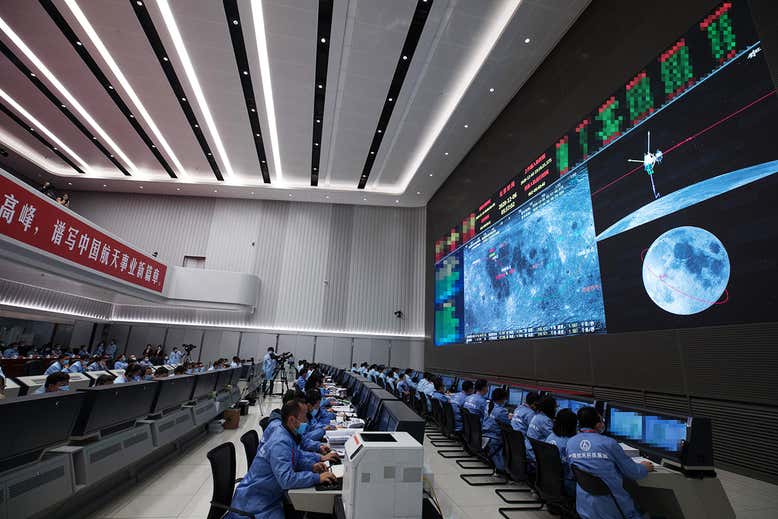Since 1976, the first lunar rock samples returned to Earth have landed. On December 16, China’s Chang’e-5 spacecraft brought back about 2 kilograms of material after a quick visit to the lunar surface.
E-5 landed on the moon on December 1, and lifted off again on December 3. The spacecraft’s time is very short because it is solar powered and cannot withstand the harsh moonlit night, which has a temperature as low as -173°C. The lunar calendar lasts about 14 earth days.
“As a lunar scientist, this is really encouraging and I am relieved that we have returned to the surface of the moon for the first time in nearly 50 years.” said Jessica Barnes of the University of Arizona. The last mission to return samples from the moon was the Soviet Luna 24 probe in 1976.
After collecting two samples, take one sample from the ground, and then take one sample from about 2 meters underground, then load them into the ascending vehicle, and then lift off to rejoin the orbit of the mission vehicle. This gathering is the first time that two robotic spacecraft have fully automated docking outside of Earth’s orbit.
The capsule containing the sample was transferred to the return spacecraft, which left the lunar orbit and returned home. When Chang’e-5 approached the earth, it released the capsule, which jumped out of the atmosphere at a time, like a rock jumping over the surface of a lake, slowing down before entering the atmosphere and deploying a parachute.
Finally, the capsule landed in Inner Mongolia. Some of the moondust will be stored at Hunan University in Changsha, China, and the rest will be distributed to researchers for analysis.
One of the most important analyses that researchers will perform is to measure the age of the rocks in the samples and how they are affected by the space environment over time. “We think the area where Chang’e 5 landed represents one of the youngest lava flows on the surface of the moon,” Barnes said. “If we can better limit the age of the area, then we can set stricter constraints on the age of the entire solar system.”
Post time: Dec-28-2020




